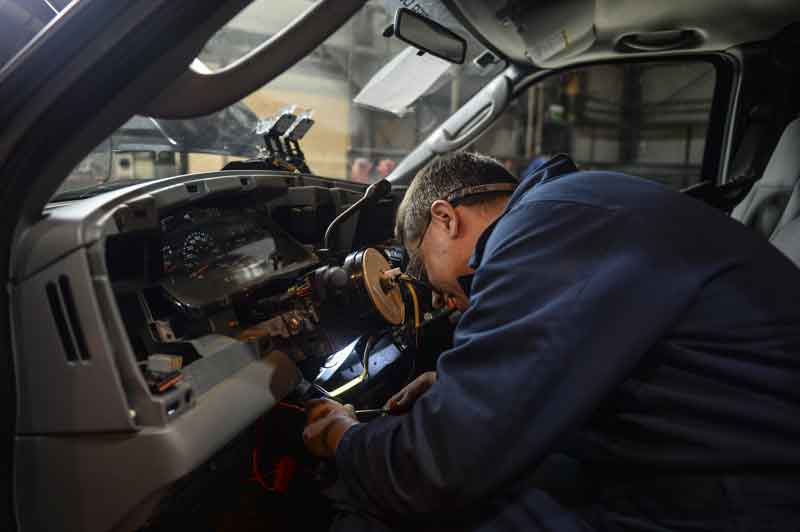How to identify and solve pesky power steering leaks.
Adding power assistance to a steering rack is probably the best thing that has ever happened in automotive development. But, power steering systems, aren’t always as straight forward as you may think.
Nowadays there are two main kinds of power steering system. The kind that is most common on modern cars is electric power steering. These typically are reliable, and efficient, requiring no fluid whatsoever. But they suffer in terms of weight and can, to spirited drivers, feel artificial.
Hydraulic power steering systems are what is most commonly found in older cars, (and some new cars) that are still being produced today. But these can be prone to springing leaks, especially as a car gets older. So, what’s the best way to fix a leaky power steering system? Read on to find out more.
Power Steering Leaks
Your vehicle’s power steering system is comprised of a highly-pressurized loop of hydraulic fluid. This fluid is transported by tubes and a pump is used to build pressure. The pump is powered by the engine, typically by a drive belt. The tubes are usually made of rubber, although metal lines can also be used to carry the hydraulic fluid in order to operate the power steering system. But as they get older and more brittle, sometimes these hoses can spring leaks.
You want to keep an eye on the fluid levels of your power steering reservoir periodically. Usually, you'll find a marker on the side of the reservoir, although in some cases you may also find a miniature dipstick.
Top Tip:
It’s important to regularly flush and change your power steering fluid too, as over time it may become thinner and less effective at doing its job.
If you’re running low, the first thing you’ll notice is that the steering is heavier. It may be slight, but it’s a good warning sign for things to come. This can also be accompanied by a churning or grinding sound as you turn the wheel, although this is not to be confused with the screeching noise one may hear from a loose or slipping power steering belt.
If you’re low on power steering fluid, the chances are that you have a leak, as typically the hydraulic fluid will not get burnt up nor will it evaporate as some other automotive fluids. But pinpointing exactly where the leak is could prove to be problematic, as it could be minuscule, and not obvious.
UV Dye to Identify
UV dye will aid in identifying the source of any leakage. Simply add the UV dye to the power steering reservoir, and run the car for about five minutes. It’s best to operate the steering at this time, but not while stationary. Turning the steering wheel when not moving could lead to increased wear on suspension components, as well as damaging the tires.
Once the UV dye has run through the system, you can then use a UV light and UV glasses to scan the components of the power steering system. You should clearly see the fluorescent UV dye if it has seeped out of a hose.
Once you've identified the hose, the best solution is to replace it, and all associated washers, clips and nipples. Remember, the power steering system operates under very high pressure, so it’s important to ensure the engine is off when removing any components of the power steering system.
Can I Use Stop Leak?
Stop leak is a term given to liquids that claim to be able to seal commonly found leaks. In terms of power steering systems, stop leaks can be specialized for use in a power steering system. Will using such liquids work, or will it damage your power steering system?
While most power steering stop leaks are safe to use, it’s recommended that caution is applied. If the leak is slow, or not major, there’s a good chance that using such stop leaks will be an effective remedy.
However, for larger issues, such as heavy corrosion, cracked power steering lines, a worn power steering rack or even failure of a power steering pump, you should bear in mind that any stop leak product could be a temporary solution to the problem. It’s, therefore, best to get professional help and advice if you have any doubts.
Applying stop leak is simple enough: following the recommended concentration (refer to your vehicle’s manual for how many quarts of power steering fluid your particular car takes) add the power steering stop leak to the power steering reservoir.
There you have it, the two most common solutions to solving power steering issues, and how to identify leaks!
